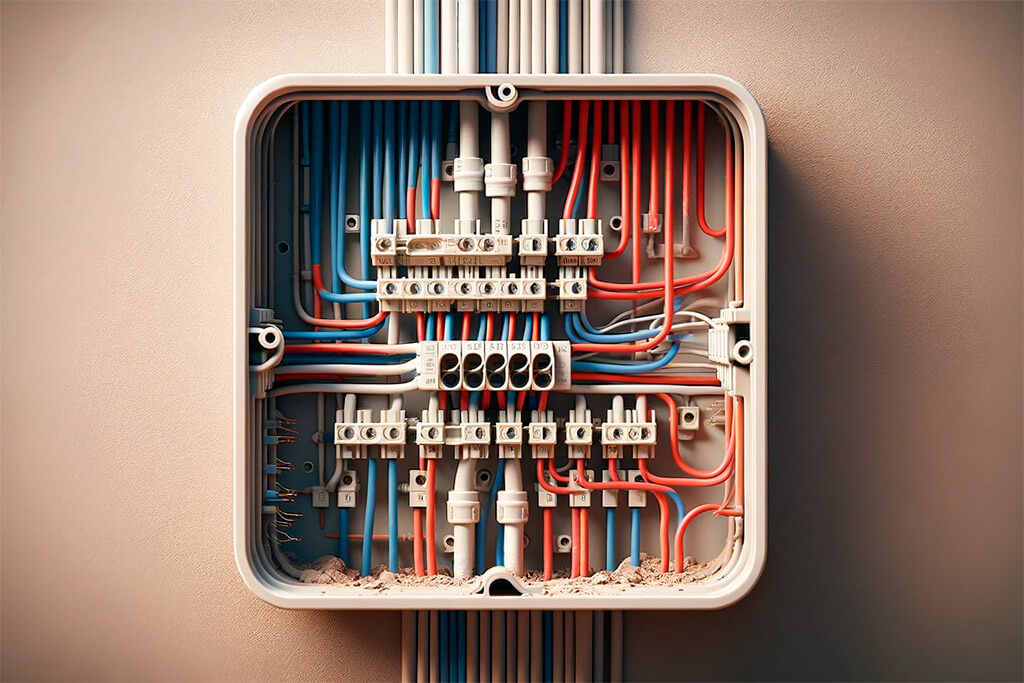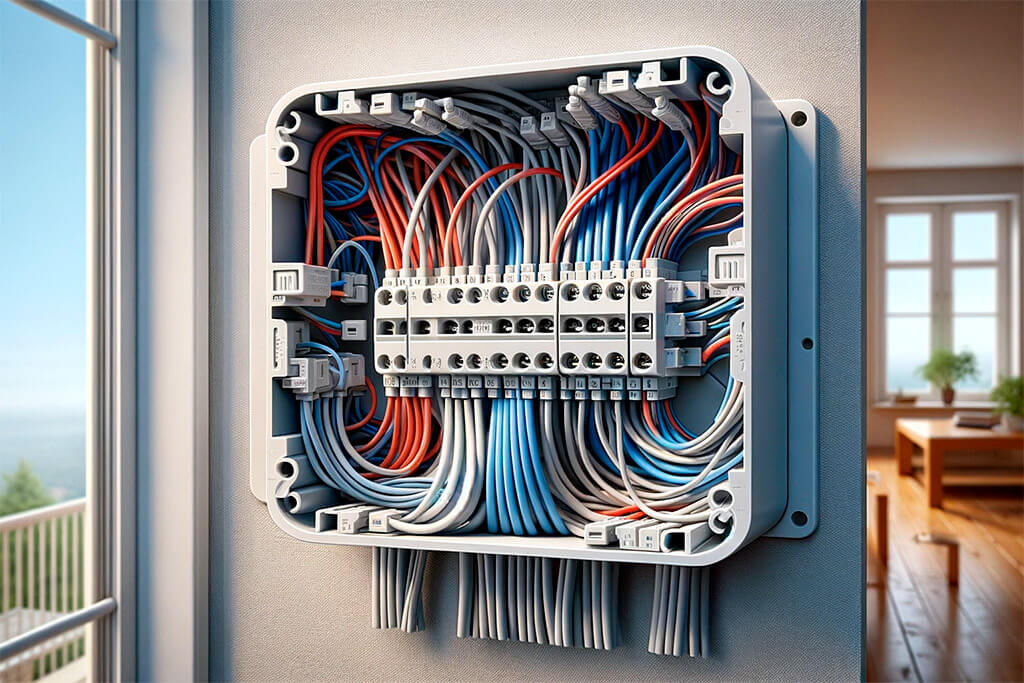Grasping the concept of wire capacity in junction boxes isn’t just important—it’s critical for every DIY enthusiast and construction pro. Why? Because it’s the bedrock of electrical safety and functionality in any building project. This piece is crafted to demystify the nitty-gritty of how many wires you can safely and legally pack into a junction box. It’s not just about following rules, it’s about understanding them to ensure your electrical work is both safe and efficient.

Basic Principles of Wiring and Junction Boxes
Let’s get down to brass tacks. A junction box, or j-box as it’s commonly known in the trade, is the linchpin in any electrical installation. It’s where your wires converge, connect, and are protected from external elements. But it’s not just a free-for-all. Adhering to electrical codes and standards is not just smart—it’s necessary. These codes are your roadmap to safe and sound electrical work, keeping everything from a minor remodel to a major construction on the right track.
Factors Determining Wire Capacity in a Junction Box
Determining how many wires can comfortably and safely fit in a junction box depends on several key factors:
- Size of the Junction Box: The size of your junction box is like the foundation of a house—the bigger it is, the more it can hold. But bigger isn’t always better. It’s about finding the right size for your specific needs.
- Type and Gauge of the Wire: Different wires have different diameters. A 12/2 wire, for instance, will occupy more space than a 14/2 wire. It’s like comparing the space an SUV takes up in a garage to that of a compact car.
- Heat Considerations and Wire Insulation: Heat buildup is a real concern in electrical installations. Wires generate heat, and too much in a confined space is a recipe for trouble. Proper insulation is like the heat-resistant gloves of electrical work—it protects.
- Local Building Codes and Regulations: Local codes can vary widely, and what works in one jurisdiction might not fly in another. It’s like driving: you need to know the road rules of the area you’re in.
Calculating Wire Capacity: Practical Guidelines
Here’s a step-by-step approach to figure out the wire capacity of your junction box:
- Measure the Box: Start with the basics. Know the size of your junction box—this is your starting point.
- Identify Wire Gauge: Determine the gauge of the wires you are using. Each gauge has its own space requirements.
- Calculate Box Fill: Add up the space each wire occupies. There are handy charts and calculators available to simplify this step.
- Consider Clamps and Grounds: If your junction box has clamps or you’re using grounding wires, these count towards your total box fill.
- Refer to the Code: Finally, align your calculations with the local electrical code. It’s the final arbiter on what’s acceptable and what’s not.
Say you’re working with several 12/2 wires. The process involves measuring your junction box, calculating the fill for each wire, and ensuring the total doesn’t exceed the code limits.

This isn’t just about ticking boxes for compliance, it’s about ensuring your electrical project is built on a foundation of safety and reliability. Whether you’re a novice or a seasoned builder, getting this right is a testament to your craftsmanship and commitment to quality. Grab your tools, open those code books, and let’s make sure your wiring is not just adequate, but exemplary.
Special Considerations
In the world of electrical work, attention to detail is not just beneficial—it’s essential. Let’s address some of the more intricate aspects:
- Two Conductors in a Box: It’s important to recognize that some components, such as switches and receptacles, are counted as two conductors. This is due to their design and the space they occupy. Think of it as accounting for both the physical space and the electrical load they represent.
- Mixing Wire Sizes and Types: Combining different wire sizes and types in a single junction box is akin to managing a diverse team. Each member brings different strengths and requires a unique approach. The goal is to ensure harmony and safety without compromising the box’s integrity.
- Overcrowding Hazards: Overcrowding in a junction box can lead to serious issues like overheating and short circuits. It’s much like overloading a circuit in a home—it’s not just a code violation, it’s a potential hazard. Proper planning and organization are key.
Junction Box Sizing Examples
Understanding junction box sizing through practical examples offers clarity:
- For a 4×4 Box: Consider a standard 4×4 junction box. When using 14/2 wires, this box can accommodate approximately 7 wires. This estimation is based on the size of the wires and the available space, much like calculating seating capacity in a vehicle.
- Visual Aids: Providing diagrams and visual representations can immensely aid in understanding these concepts. They serve as a blueprint, offering a visual perspective on theoretical knowledge.
Best Practices and Safety Tips
Adhering to best practices ensures safety and efficiency in any electrical project:
- Stick to the Code: Local electrical codes are the rule book of electrical work. Ignoring them is akin to ignoring safety protocols in construction—it’s not just impractical, it’s dangerous.
- Installation and Maintenance: Proper installation of junction boxes requires precision and care. Regular maintenance is equally important, much like routine checks and balances in any construction project.
- Regular Inspections: Vigilance in inspecting for signs of wear, overheating, or damage in wiring systems is crucial. It’s comparable to the regular inspection of a building’s structural integrity.
FAQ Section
This depends on the box size and wire gauge. It’s a balance between space and safety, similar to calculating load capacity in building design.
A standard box typically accommodates about 5 to 6 wires, depending on the box’s design and dimensions.
Yes, metal boxes usually have a higher capacity due to their better heat dissipation qualities, much like different materials used in building provide various strengths.
Mixing wire sizes is possible, but it requires careful planning to ensure balance and safety, much like mixing materials in a renovation project.
